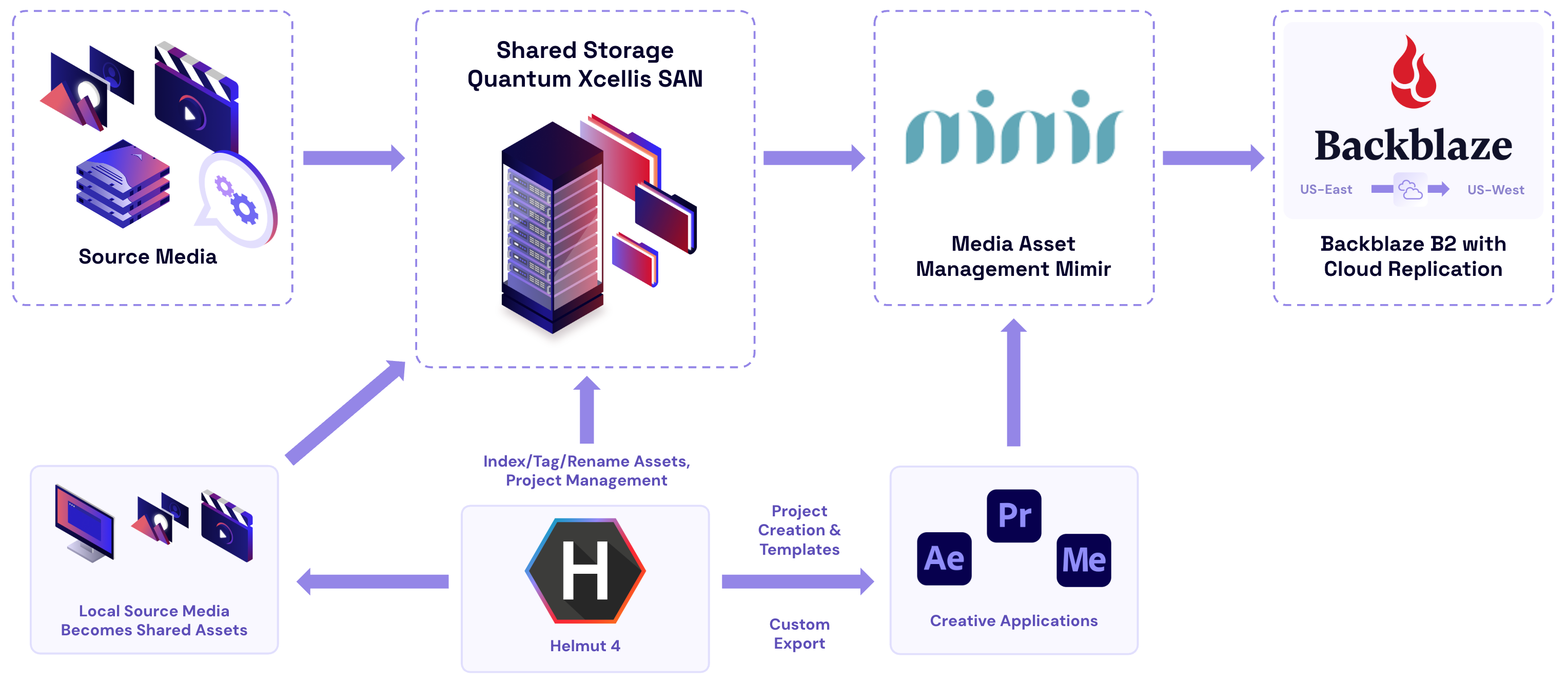Running the IT Play
With Backblaze B2 on the squad, they shifted hundreds of terabytes from their old SAN to Backblaze without any time-outs necessary thanks to Backblaze Universal Data Migration (UDM), then put it on the field with a brand new Quantum Xcellis for nearline storage. Then, they integrated Mimir, a media asset management platform that includes production asset management, archive, and object-store integration, to keep everything organized and on time. Whenever a file is uploaded to Mimir, it’s automatically stored in Backblaze B2 via Mimir’s file indexer system Kelda. To orchestrate and automate the Adobe editing environment, the Eagles adopted Helmut4, enabling tighter management of project workflows across a distributed editing team—all while leveraging Helmut Cloud as a bridge to Mimir and B2 for source and archive management. This covered the game day action—their production team had fast access to recently recorded content, and it allowed them to work more flexibly from home, which was especially important on those late nights after a game.
Next they moved on to protecting every part of their game plan: To ensure all of the content was doubly secure off-site, they migrated the remaining data on their LTO-6 tape system, again using UDM. Then, they utilized Backblaze Cloud Replication to ensure that every byte uploaded to a nearby cloud region was safeguarded in a more distant cloud region to protect them from any regional disasters.
The Final Score
The team added another layer of protection with backups that were truly off-site across the country versus down the street. They made room in their offices. They empowered their production team by giving them instant access and fast workflows so they can work without slowdowns. And, they freed up IT staff time spent managing all that tape and old hardware. It all added up to a big win for the IT team, the franchise, and the fans.












.png)

